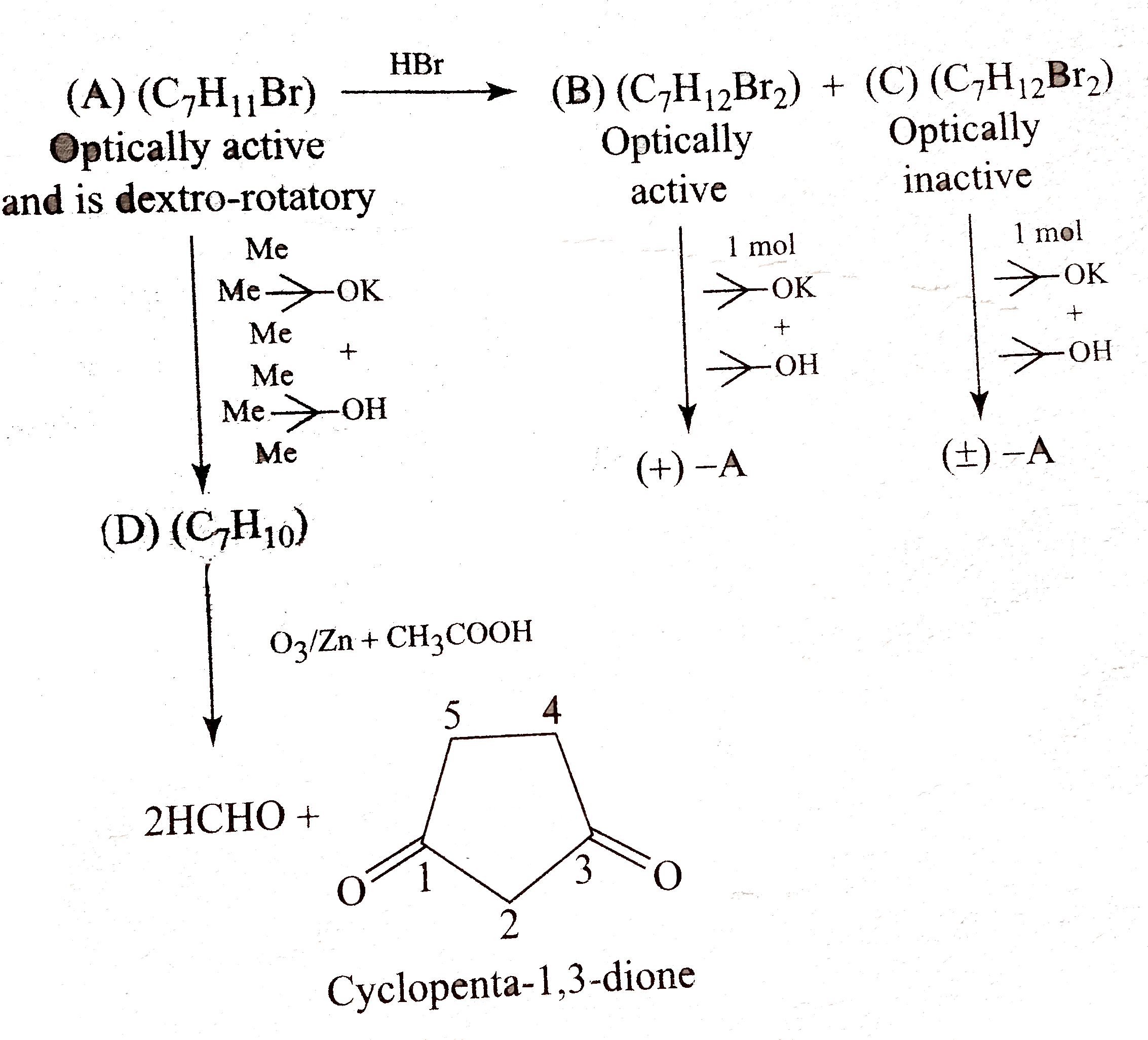An element A burns with golden flame in air. It reacts with another element B, atomic number 17 to give a product C. An aqueous solution of product C on electrolysis gives a compound D and liberates hydrogen. Identify A, B, C and D. Also write down the equations for the reactions involved.
To solve the problem step by step, we will identify the elements and compounds involved based on the information provided in the question.
Step 1: Identify Element A
The question states that element A burns with a golden flame in air. The only metal known to burn with a golden flame is sodium (Na).
Hint: Look for metals that have distinctive flame colors when burned.
Step 2: Identify Element B
Element B has an atomic number of 17. Referring to the periodic table, we find that the element with atomic number 17 is chlorine (Cl).
Hint: Use the periodic table to find the element corresponding to the given atomic number.
Step 3: Determine Product C
Element A (sodium) reacts with element B (chlorine gas, Cl₂) to form a product C. The reaction between sodium and chlorine gas produces sodium chloride (NaCl).
Chemical Equation:
2Na(s)+Cl2(g)→2NaCl(s)
Hint: Consider the common compounds formed from the reaction of a metal with a non-metal.
Step 4: Identify Product D from Electrolysis
The question states that an aqueous solution of product C (sodium chloride, NaCl) undergoes electrolysis, resulting in the formation of a compound D and liberation of hydrogen gas. During the electrolysis of sodium chloride solution, sodium hydroxide (NaOH) is produced along with chlorine gas (Cl₂) and hydrogen gas (H₂).
Chemical Equation:
2NaCl(aq)+2H2O(l)→2NaOH(aq)+Cl2(g)+H2(g)
Hint: Recall that electrolysis involves breaking down compounds into their components and often produces hydroxides and gases.
Summary of Identifications
- Element A: Sodium (Na)
- Element B: Chlorine (Cl₂)
- Product C: Sodium chloride (NaCl)
- Compound D: Sodium hydroxide (NaOH)
Final Chemical Equations
1. Reaction of sodium with chlorine:
2Na(s)+Cl2(g)→2NaCl(s)
2. Electrolysis of sodium chloride solution:
2NaCl(aq)+2H2O(l)→2NaOH(aq)+Cl2(g)+H2(g)
The question states that element A burns with a golden flame in air. The only metal known to burn with a golden flame is sodium (Na).
Element B has an atomic number of 17. Referring to the periodic table, we find that the element with atomic number 17 is chlorine (Cl).
Element A (sodium) reacts with element B (chlorine gas, Cl₂) to form a product C. The reaction between sodium and chlorine gas produces sodium chloride (NaCl).
2Na(s)+Cl2(g)→2NaCl(s)
The question states that an aqueous solution of product C (sodium chloride, NaCl) undergoes electrolysis, resulting in the formation of a compound D and liberation of hydrogen gas. During the electrolysis of sodium chloride solution, sodium hydroxide (NaOH) is produced along with chlorine gas (Cl₂) and hydrogen gas (H₂).
2NaCl(aq)+2H2O(l)→2NaOH(aq)+Cl2(g)+H2(g)
- Element A: Sodium (Na)
- Element B: Chlorine (Cl₂)
- Product C: Sodium chloride (NaCl)
- Compound D: Sodium hydroxide (NaOH)
1. Reaction of sodium with chlorine:
2Na(s)+Cl2(g)→2NaCl(s)
2NaCl(aq)+2H2O(l)→2NaOH(aq)+Cl2(g)+H2(g)
Similar Questions
Identify [A][B] and [C] and gives the complete chemical reactions involved.
 View Solution
View SolutionA black mineral (A) on heating in presence of air gives a gas (B). The mineral (A) on reaction with dilute H2SO4 gives a gas (C) and a solution of a compound (D) on passing the gas (C) into an aqueous solution of (B), a white turbidity is obtained. The aqueous solution of (D) on reaction with potassium ferricyanide gives a blue compound (E). Identify (A) to (E) and give chemical equations for the reaction involved.
View SolutionGive the stereochemical forculae for (A),(B)(C), and (D) and also give the reactions involved.
 View Solution
View SolutionGive the products of the reactions given below.
b.
c.
d.
e. View Solution
View SolutionA compound (A) of boron react with NMe3 to give an adduct (B) which in hydrolysis gives a compound (C) and hydrogen gas. Compound (C) is an acid. Indenfity the compounds A,B and C. Give the reactions involved.
View SolutionAn alkali metal A gives a compound B (molecular mass = 40) on reacting with water. The compound B gives a soluble compound C on treatment with aluminium oxide. Identify A, B and C and give the reactions involved.
View SolutionAn organic compound A (C2H6O) reacts with sodium to form a compound B with the evolution of H2 and gives a yellow compound C on reacting with iodine and NaOH. When heated with conc. H2SO4 at 413 K, it gives a compound D (C4H10O) which on reaction wiht conc. HI at 373 K gives compound E. The compound D is also obtained when B is heated with E. Idntify the compounds A,B,C,D and E write the equations for the reaction involved.
View SolutionAn element P(atomic number 20) reacts with an element Q (atomic number 17) to form a compound. Answer the following questions giving reasons :
(a) Write the positions of P and Q in the Modern Periodic Table.
(b) Write the molecular formula of the compound when P reacts with Q.View SolutionAn element A reacts with water to form a compound B which is used in white washing. The compound B on heating forms an oxide C which on treatment with water gives back B. Identify A, B and C and give the reactions involved.
View SolutionA ketone A, which undergoes halform reaction, gives compound B on reduction B on heating with sulphuric acid gives compounds C, which forms mono-ozonide D.D on hydrolysis in the presence of zinc dust gives only acetaldehyde. Identify A, B and C. Write down the reaction involved.
View Solution

